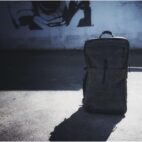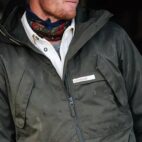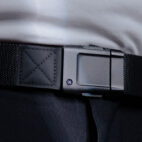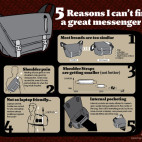Talking Travel Gear with Victorinox (Part I)
A little over a year ago Victorinox took over full responsibility of its Travel Gear division from its licensee. A decision that sparked new energy into the brand, fostering their ability to apply renewed focus to their travel goods in order to create honed, multifunctional pieces that could rival the brand’s renowned pocketknifes in practical and versatile design. To bolster their travel goods efforts, Victorinox Travel Gear AG was created, with CEO Carsten Kulcke at the helm to steer the division into deeper yet clearer waters. To learn more about Victorinox Travel Gear’s move to in-house design, we asked Carsten to share his insights…
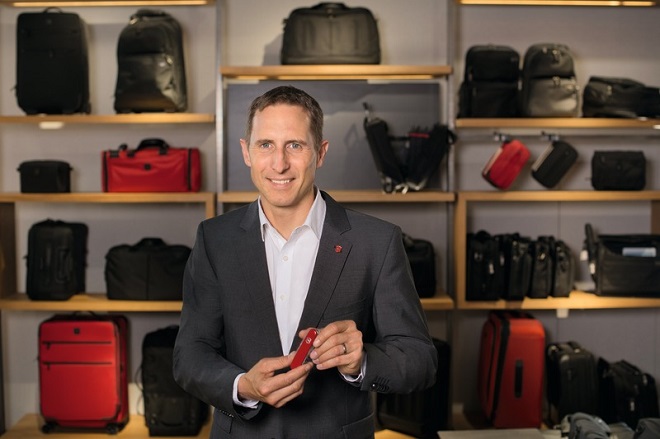
At Victorinox we had a substantial change in the structure of our business last year. Formerly, Victorinox Travel Gear was a license, which was managed out of the US. And August 1st last year we changed this, and it’s now a full product division within the Swiss company. That allowed us to look much more into the long-term development of the product to make sure that it’s for real what the brand stands for. And since the brand is very keen to show innovation and to prove the point of quality and longevity, we now have the opportunity to look much more into this than a licensed partner ever could because they have to run their business, and I guess they have their annual returns they’re looking at. But this is very different now, which allows us to really go back and do exactly what is so much fun: to look at all the details of the product, and to see if there is anything which consumers would love to have – even without knowing – but what fits into their use of the bags in a much more substantial way, other than maybe changing the zipper-pull, or the style of the wheel.
So, in terms of the model you’re moving to, is it that that will continue? It is global. There’s certain license agreements set up around the world, distribution agreements. You’ll continue to have that. What you will get now, though, is more of a long-term investment in the travel gear because this is now part of Victorinox’s brand equity ongoing. This is no longer a licensed deal that might not be renewed or have something else happening.
Overall, we have reduced licensing significantly. The four divisions of the core product categories on the Victorinox side are all in-house divisions. When we talk about the fragrance, when we talk about the watches, when we talk about the knives, apparel and travel gear, those are all in-house divisions where we have our own development groups looking after the long-term development of new things to make sure that they’re all up to par when it comes to the brand. Specifically the brand DNA and with that the question of innovation and quality to find interesting materials, to find solutions for the consumers.
“Overall, we have reduced licensing significantly. The four divisions of the core product categories on the Victorinox side are all in-house divisions.”
I’m totally thrilled with that. Specifically since we have now the opportunity to build a Swiss development group which looks after technical development. We have filed for the first patents. So this is really the essential work to be done to fill a pipeline to create the goods which we believe are meaningful to the consumer in the future.
It’s nice understanding a brand essence and where it’s drawn from. It feels so much more important that you are getting proper control of your brands and bringing them into Switzerland and making sure that that’s where they’re designed. So for instance, many brands will license off their wallets or their bags or their accessories and they’re often a licensed company. And Hong Kong will own the license, and it’s made by a supplier in China who ends up designing it so it’s easy to make for them. And then the license holder approves it and the home brand never even has any creative input into it. And that’s where you really start to see that dilution of what a brand should stand for and where it should be. So getting that sense of the Swiss aspect and the Swiss Army Knife aspect are two of the core things. It’s that preparedness and then the very Swiss-ness of it.
This quite frankly was the foundation for this decision to create the in-house division, the product division. The owning family believes that travel gear is a fantastic carrier for the brand. The pocket knife, you carry in your pocket. So even if it’s very important to the owner – emotionally there’s a lot of attachment to it, it’s a great tool, it’s a great companion – to the outside it’s not visible. When you translate the same thing into travel gear where you have something where the brand is visible to the public – because you push your piece of luggage through the airport or you carry your backpack – it’s much more a branded statement which is visible to the outside. And since there is this idea of the companion close to both of those product categories, the Charles Elsener family really felt that it’s a great opportunity to create this long-term development for travel gear under this brand that has been already very successful in the US. But to really utilize this category to broaden the scope and to go international with it.
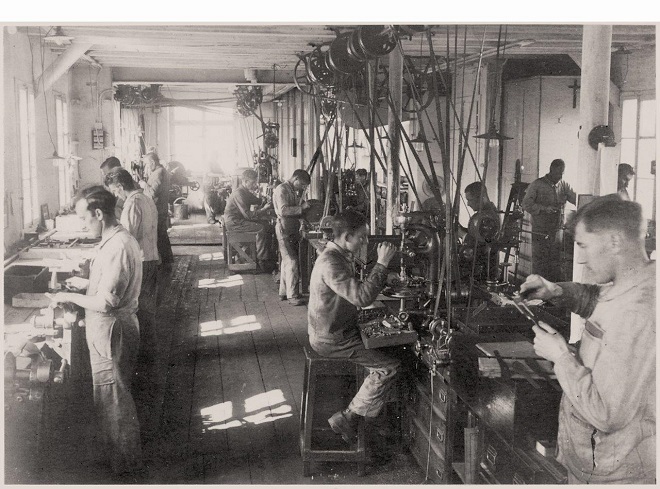
How is the design team shaping up? You’ve talked about the new Swiss development group you have. Is that a series of designers and developers just for the travel gear? Or will they work across some of the other Victorinox divisions and categories?
It’s both. So we paralleled our US development with the Swiss development now. So we have basically two streams of engineers and designers working on product. In Switzerland we do more of the technology development right now. So when it’s new solutions, new components, new materials, they get sourced and looked at, spec-ed and developed here. But this is all very dedicated travel gear. So our US team – when I’m talking about our US team and our Swiss team, those are all specifically designers and engineers working on travel solutions. But then here in Switzerland there is a natural give and take. Basically the other development teams are close by. There’s some exchange there. But then, on top of that, there’s our design director Christopher Raeburn looking at the apparel side. And we now have a lot of exchange with him to make sure that when we bring our merchandise in our own stores that the collections really fit together so that it’s properly merchandisable in the stores. But also that we utilize the creativity of the apparel group to bring it back into the travel gear division.
“In Switzerland we do more of the technology development right now. So when it’s new solutions, new components, new materials, they get sourced and looked at, spec-ed and developed here.”
And one of those items is one of our new backpacks for business travelers. And usually it will be – so, it’s leather and it’s all black, for the business community. But then this is made up in a camouflage pattern which Christopher came up with. And we basically just put it on there, and it became such an intriguing piece looking so different. I guess that’s the exchange which we love. When we have our different groups, when they come together, and under Christopher’s lead now we have a good opportunity to have basically people from all of the five divisions sitting together and then come up with an idea across the product categories. Now, in store, we have a capsule collection from the apparel team which started with wool where they used an old-fashioned material, this heavy wool, and we took this material also and made some pieces from our urban collection from it. And those pieces are just fun. They’re just very intriguing, and they bring the style and the functionality together in a way which otherwise wouldn’t happen.
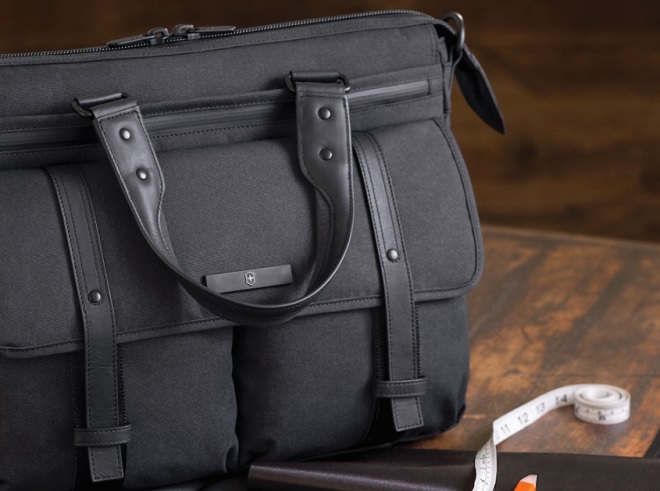
That’s exciting for me personally. I’ve been incredibly frustrated with the limited material and color palette that so many travel brands have been using. Just black, ballistic nylon – very synthetic-looking. It’s good to see more interesting naturals coming in and more textural things that you actually want to touch, and that they look like things that might patina or develop a lovely character as they progress. Still, most people’s favorite romantic image of a suitcase is one that’s bashed, it’s got stickers all over it, it shows the marks of its travel and its journey. And then we all spend time trying to make these immaculate suitcases that will never age or never move or never change. That seems incongruous. It seems like we’re missing something there.
Very true. And there’s really the question of what life does a material really have. And obviously the old-fashioned materials had a much better life than all the new things which we create. When we look at the metals and when we look at the leather, they usually have a fantastic way to age and to tell a story along the path of the cycle of a suitcase or a backpack.
In the transition of the brand as it’s moving more in-house, more controlled, do you have a sense of key items or things that you’re most proud of, or that you really want to see live? These transitions where things are tightening up – urbanization, denser living, technology adaptation – you have this new world. What are those pieces that the brand already has that might help you navigate through those transitions and into the brand you really want to be? Are there pieces in the range that you feel can be the continuity between the old Victorinox and the new Victorinox for the new world?
Yeah, there are. For sure. There’s the travel organizer, which comes in two styles. There’s a nylon and a leather version of it. And this for me showcases the breadth which we need to have. So the price points. But also from the application, we have a lot of consumers who just require the functionality. But then we also have the consumers who like the better goods or the material, the finish, the touch of the goods are important because people feel that – it’s what they surround themselves with and when specifically on a trip you don’t have that many things to bring, some people get a lot of comfort in bringing some nicer goods to have them really as part of their own personality. When we scale up from there, we just launched the couture bag in our urban collection, which for me is the essential bag for the modern business person. It’s casual enough to be a lifestyle expression. But it’s also serious enough and practical enough that you can really do your business out of this bag as a briefcase or as a backpack. And actually it has three ways to carry it. It showcases exactly where the migration between the more rural to the urban lifestyle really works well. And then, there’s this Red Dot Award piece. The dual-access carry-on, the Spectra carry-on to be the icon for what we do on the travel gear side, on the luggage side when it comes to suitcases, when it comes to the growing hardware for long but convenient travel.
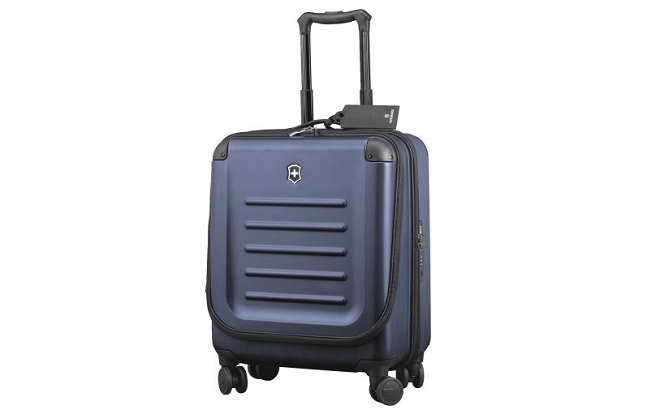
I’m not sure how much you travel, but it’s not that difficult to look around to see what people actually do. From there to extrapolate, to envision what’s important in the scale of where we actually work when we say travel goods from leather goods to the suitcase. That’s where we believe we actually can make a difference and we can put merchandise into the marketplace which is really meaningful to people.
That’s really nice. Is it part of the architectural range? That range with a better texture to the fabrics and an urban or work aesthetic that can then travel as well?
Yes. So it’s not a ballistic nylon bag. The fabric is very soft to the touch. But it’s still a very rugged material. Very much abrasive-resistant. I just wanted to showcase that to our own sales team and so we poured some water over it, threw it in the snow. Usually I just throw it under the seat because then you have better access to your laptop when you want to work during the flight. And for me this was such a great opening for my work at Victorinox because it doesn’t need to look rugged and massive. It can be very subtle, it can be very casual, it can be very lifestyle, but still have the full trueness of our multi-functionality and quality. And people were just completely surprised. We started pouring water from a bucket over this bag, and you see all of a sudden the water is just kind of pearling away, and we lift it up and it’s “Well, there’s your bag again. Nothing really happened.” So for me a great piece to showcase what we’re standing for and the direction we’re going.
That’s exciting. I think it would be very easy for people to think that a Swiss Army Knife had to be a Tonka truck or a Humvee or something, or this rugged overt thing. And you’re absolutely right. It doesn’t need to be. It can still be versatile, it can still be multifunctional but it can be discreet about it.
Yes. Half the size a lot of times is still enough.
That’s quite a good motto. That’s great.
It has been a year of a lot of hard work and development.
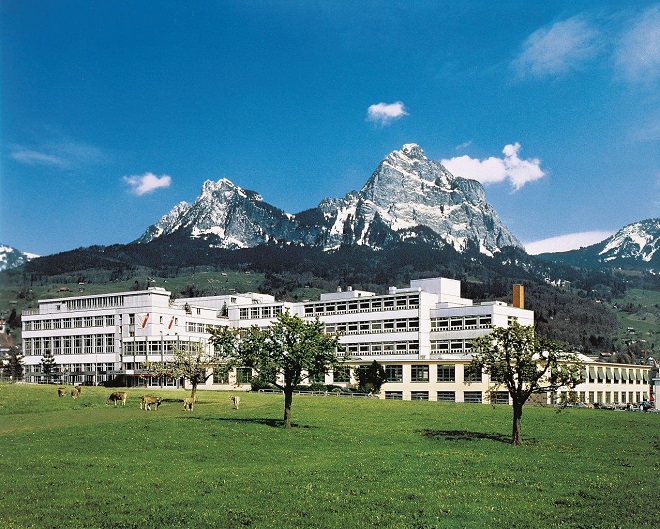





 Carry Awards
Carry Awards Insights
Insights Liking
Liking Projects
Projects Interviews
Interviews





